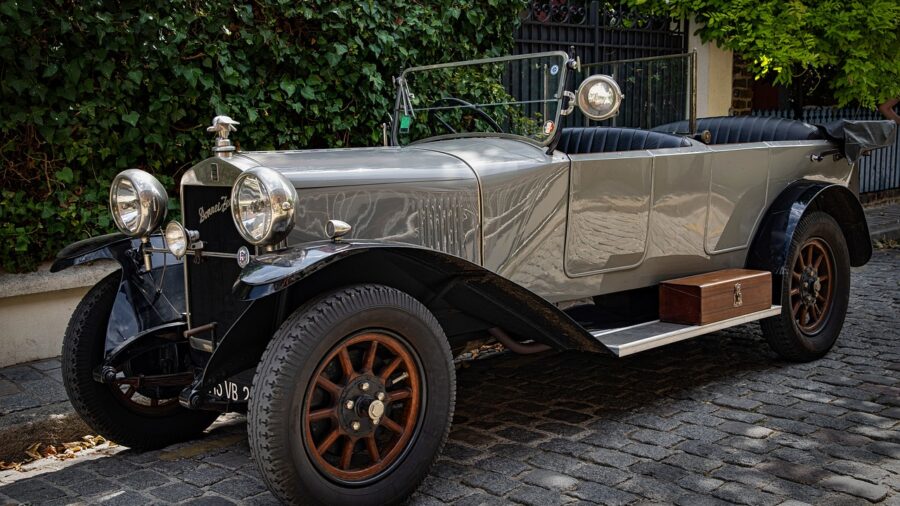If you already own a historic vehicle, you know they’re not cheap to maintain. They constantly need mechanical repairs, spare parts and accessories or bodywork. In fact, enthusiasts in Australia spend $10 billion a year on around 970,000 historical vehicles. Can you afford to own a historic vehicle?
What is a historic vehicle?
Around 5.6 million historic vehicles are fully registered in Australia. There are two types:
- Heritage – over 30 years old, maintained in authentic, historically correct condition
- Classic – 15-30 years old.
A recent Australian Motor Heritage Foundation (AMHF) survey of motoring clubs found it’s common for enthusiasts to own more than one historic vehicle. Around half of respondents owned only one and the other half owned two or more. Just over three quarters were heritage vehicles, just under a quarter were classic vehicles.
How much does it cost to maintain a historic vehicle?
How much you spend on maintaining a historic vehicle depends on whether you do the work yourself or pay someone else to do it.
The AMHF survey found average spend was $10,240 a year, 13% more than maintaining a regular vehicle. However, the type of spending is different. Usually, the biggest expenses are fuel, motor insurance, registration and green slip. But historic vehicle owners pay more for:
- Mechanical repairs
- Parts and accessories
- Bodywork.
They may also pay more for fuel, because it has to be high octane or even specialised fuel for racing. Just under half spent $2,000 to $4,000 a year on fuel.
Mechanical repairs
You can expect to spend an average of $1,969 per year on mechanical repairs. However, this average masks the fact some owners spent more than $10,000 on repairing their vehicles. If you’re one of the 37% who do repairs themselves, you can spend almost nothing.
Parts and accessories
Just over half spent $5,000 to $10,000 on parts and accessories. It can take a while to source the parts you need and they may cost more than modern parts. While the average spend is $1,479 a year, just under a third of owners said they spent nothing on parts and accessories.
Bodywork – bodybuilding, panel beating, spray painting
Obviously old vehicles need more bodywork than ordinary vehicles. Two thirds of owners who needed bodywork done spent more than $10,000 a year. The average was $1,365 because 60% of owners did their own bodywork.
Insurance and registration
As most owners conditionally register their vehicle, the average spend is $359 on CTP green slip and registration. This is less than a quarter of the cost of full registration. However, a fifth of owners didn’t register their vehicles at all. The majority (70%) spent less than $500 on other types of motor insurance.
Conditional registration already includes a CTP green slip so you don’t have to buy this separately. You do need to follow strict conditions for driving historic vehicles. For example, you have to be a member of a designated motoring club.
Whether you choose conditional or full registration depends on how much you want to use your historic vehicle.
How much do you want to use your historic vehicle?
Most historic vehicles travelled only 1,348 kms a year, 11% of the national average distance. Over a third travelled less than 2,000 kms.
If you choose to conditionally register your vehicle, you can use it only for:
- An authorised club event, with your official invitation recorded in a logbook
- 60 days per year for maintenance and personal use outside club events
- Inspection or servicing within a short distance from its usual garage.
Should I buy a historic vehicle?
The choice to buy a historic vehicle is a personal one and many enthusiasts are passionate about their hobby. They know it’s going to be an expensive choice but they want the pleasure of owning one anyway.
However, if you use your historic vehicle only occasionally, the costs of maintaining it will seem proportionally higher. As one Autocar enthusiast said:
“I should have worked it out along with just how much it cost to mostly stand still. You don’t actually need it. It’s designed for an era and motoring conditions that no longer exist.“
While it may be designed for another era, the chances are that’s why enthusiasts want to buy a historic vehicle in the first place.


your opinion matters: